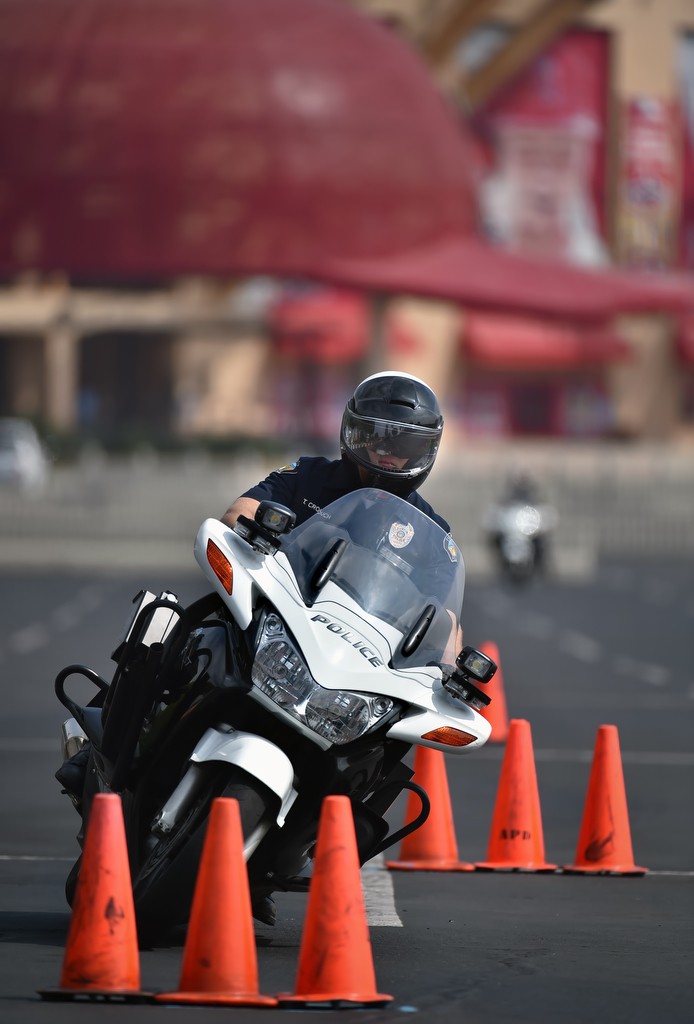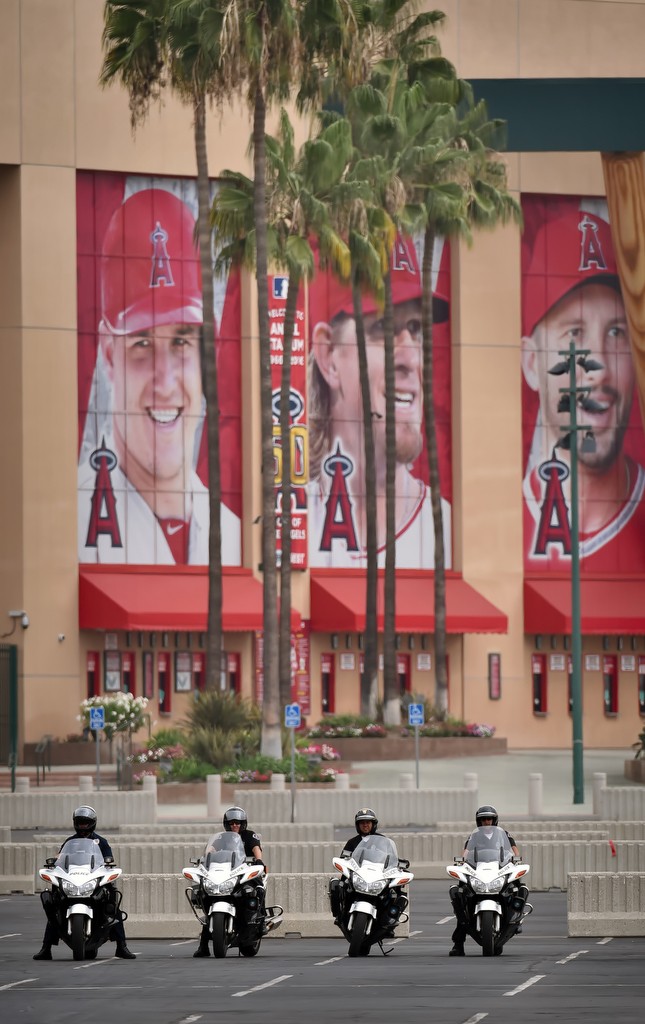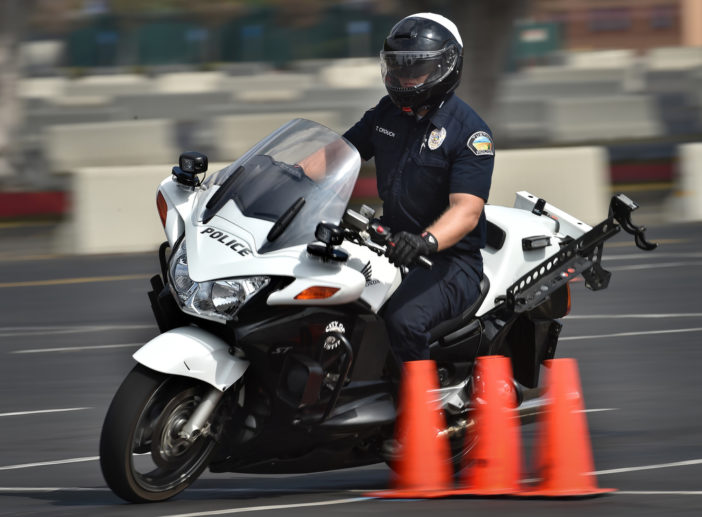At first, it looked impossible.
There seemed no way to maneuver a nearly 900-pound motorcycle through orange traffic cones laid out in tight spiral patterns on blacktop.
Tim Crouch lost count of how many times he laid his bike down in learning to work those patterns while attending the Anaheim Police Department Motor School.
But with time and dozens of hours of training, the cone patterns seemed to widen and Crouch easily maneuvered his bike through.
Today Crouch is Tustin PD’s newest motor officer— an assignment he’s been interested in since joining the department in 2011 as a cadet in the traffic unit.
“It’s kind of like I’m coming home,” he said of rejoining the team.
As a kid, Crouch wanted to be a pilot in the Air Force but switched his focus to law enforcement after entering college. (He currently is working toward his bachelor’s degree in criminal justice.)
“I didn’t feel like going into the military was a good fit for me,” he said. “I wanted something that was going to be more community-oriented.”
After two years as a cadet, Crouch was hired in 2013 as a police officer and has been working patrol ever since.
Being an officer is “really rewarding,” he said. “There are days I come home and feel really good about some call I had or something uplifting that happened. You’re in a role where you can make a difference.”
But Crouch was ready for a new assignment and he had always been interested in becoming a motor.
About a year ago, the 24-year-old bought a black-on-black Yamaha FJR 1300 and got his license to ride recreationally.
After learning he would be Tustin PD’s newest motor officer, he quickly realized how different riding for traffic enforcement would be.
“When I was riding on my own before if I wasn’t comfortable making a turn or some maneuver, I wouldn’t do it,” he said. “I was really limited. Now I know there is so much more you can do to maintain your safety and be more aware.”
It takes six weeks of training, which includes a two-week pre-academy, plus a week of enforcement training in the city before a motor officer can patrol the streets.
Crouch vividly remembers the first day of the pre-academy.
“The first thing (the instructor) did was knock a bike over and say, ‘OK now pick it up,’” he recalled. “He said, ‘You’re going to learn how to pick it up on your own because you are going to drop it.’”

With Angels Stadium behind him, Tustin PD Officer Tim Crouch makes his way through the 30-cone weave during Anaheim PD’s motor school.
Photo by Steven Georges/Behind the Badge OC
Throughout the academy, Crouch said he constantly was faced with new mental and physical challenges to overcome.
In the early days of training, if the bike leaned too far to the left, he’d plant his foot on the ground to catch himself — a big no-no that could lead to injury.
Crouch was taught to pull the motorcycle upright with the right amount of brake and throttle control.
“If the bike’s going down, it’s going down,” he said. “You learn to drive it upright in most situations.”
His bike went down many times during training, but it’s to be expected with the skills motor officers need to master.
“It’s a totally different style of riding than your general commuter rider,” he said. “You have to have confidence to put these bikes in awkward situations.
“There are so many things you have to account for in your head and so many different skills you have to master to get those maneuvers to be as smooth and fluid as possible.”
Repeating a move dozens of times turned into hundreds of times as the days passed and soon they started to feel like second nature.
“This takes a lot of perseverance,” Crouch said. “But you have to go back out and keep working at it.”
When things got really tough, Crouch relied on quick meditation to pull through a tough skill set or pattern.
“Sometimes you can get too down on yourself or too nervous, but you need to have confidence,” he said. “So I would close my eyes and just breathe, then when it was my turn I’d open them and go.”
Now that the toughest part of training is behind him (although he’ll be required to brush up on skills periodically as part of the traffic unit), Crouch can now focus on what he most looked forward to in becoming a motor officer.
“More people die in traffic accidents than homicides every year,” he said. “I’m seeing a different side of the job and doing a different aspect of police work to keep people safe.”

Anaheim PD Motor School students from left, Tustin PD Officer Tim Crouch, Anaheim Sgt. Rick Boyer, Officer Mike Padilla and Officer Tony Silvestri get ready to run through the 40 decel course (speeding up to 40 mph before a sudden deceleration to make your way through the cones) during Anaheim PD’s motor school at the Anaheim Angels Stadium parking lot.
Photo by Steven Georges/Behind the Badge OC
 Behind the Badge
Behind the Badge



